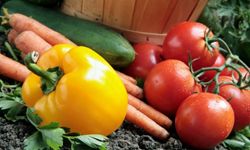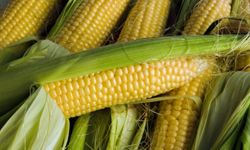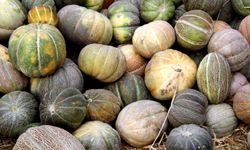
Grocery store produce departments are filled with fruits and vegetables from countries such as Chile and South Africa, along with varieties from across the United States. Yet, many produce eaters are looking a little closer to home for their vegetables supplies -- their own yards. According to a recent National Gardening Survey, in 2008, an estimated 70 percent of all U.S. households participated in one or more do-it-yourself indoor or outdoor lawn and garden activities; one of the most popular was vegetable gardening [source: National Gardening Association].
This trend toward vegetable gardening can also be seen in a transition of residential yard environments. According to a recent survey in American Society of Landscape Architect, nearly one in five residential landscape architects are switching out regular grass for edible gardens [source: American Society of Landscape Architects].
Advertisem*nt
Vegetable gardening may be becoming more popular, but it still takes careful planning and hard work to make it successful. "Vegetable or edible gardening [is] not low maintenance," says Jennifer Bartley, landscape architect, author and owner of American Potager.
For beginning gardeners, and even some seasoned gardeners, there are certain vegetables that can be more difficult to grow than others. In this article, we we'll look at 10 of the hardest vegetables to grow and maintain in your garden.
Contents
- Cauliflower
- Celery
- Sweet Corn
- Eggplant
- Head Lettuce
- Carrots
- Muskmelon
- Onion
- Sweet Potato
- Artichoke
10: Cauliflower
Cauliflower, a part of the brassica family, which includes broccoli and cabbage, can be a difficult vegetable to grow. "Cauliflower is a little tricky because it has a long growing season, and it prefers it a little cool," says Bartley. Cauliflower doesn't like it too hot or too cold, so you have to start it early enough to have it mature by the hot temperatures of summer, but late enough so that it doesn't get too cold [source: University of Illinois, Urban Extension]. Its ideal temperature range for growing is about 65 to 80 degrees Fahrenheit (18 to 26.5 degrees Celsius) [source: ]. In order to get a white-headed beauty, cauliflower must have the right temperature, but most plants must also be blanched, or have the stalks bent so that the outer leaves come up and over the top of the head, covering it [source: The Editors of Garden Way Publishing]. The leaves must be tied and stay this way until the head has matured.
Along with correct growing conditions, cauliflower is also susceptible to bugs, such as cabbage worms and disease.
Advertisem*nt
Cabbage Worms
A cabbage worm looks like a little green caterpillar, but don't let that fool you. They can quickly eat through the leaves of your cauliflower plant [source: Grupp]. While chemicals can be used to get rid of these pests, you can also pick off the worms or cut off leaves with worm eggs on their undersides [source: Bartley and ].
9: Celery
Crunchy, green stalks characterize mature celery, yet for some growers, it can be difficult to get celery to that point. Celery requires a lot of moisture, so it should be planted in a soil that can hold water well [sources: Spencer and The Editors of the Garden Way Publishing]. The moisture requirements can be a burden on some gardeners who might not be used to consistent watering. The plant also has a long growing season of about 120 to 180 days from seed to harvest [source: Bartley]. During the growing season, celery also needs cooler temperatures, making it a difficult plant to grow during the summer in the Midwest or South.
As an alternative to celery, Bartley recommends cutting celery, which has the celery flavor, but is actually grown for its leaves instead of its stalks.
8: Sweet Corn

Farmers across the nation grow corn, yet strategic choices are integral to producing a successful crop. When selecting the varieties you're going to plant, be careful about planting certain ones, such as super-sweet and sugar-enhanced plants, together. These can cross pollinate and produce ears with field corn kernels that don't taste that good [source: Coolong and ].
You'll also need a good amount of space and correct placement to grow corn properly. "Typically, corn is wind-pollinated," says Timothy Coolong, Ph.D., extension vegetable specialist for the University of Kentucky. "The pollen comes off the tassel at the top of the plant and then goes down to the silks that come off the ear of the corn; that's how it's pollinated."
Advertisem*nt
Due to wind pollination, the corn crop needs to be planted in a square shape with at least 15 to 20 plants [source: Coolong and ].
7: Eggplant
If you're a fan of eggplant parmesan, then you might want to grow the deep purple vegetable in your garden. While eggplants are very sensitive to temperature fluctuations, one of their main problems is pests. "My plants (eggplants) usually look like the leaves have been shot with a pellet gun with tiny holes everywhere," says Bartley. "The holes are from the flea beetle."
The flea beetle, along with other pests, can be combated by row covers as well as pesticides [source: Bartley and Coolong]. Organic gardeners can have an especially difficult time with these plants. "They have a lot of insect pests," says Timothy Coolong, Ph.D., extension vegetable specialist for the University of Kentucky. "If someone doesn't want to spray a lot of pesticides, [eggplants are] fairly challenging to grow."
Advertisem*nt
6: Head Lettuce

Leaf lettuce can be fairly easy to grow. Yet, if you want one of those nice specimens you can get at the grocery, you're going to have more of a challenge. "If you want a nice attractive head like they sell in the stores, it needs uniform watering and if you have temperature fluctuations, in lettuces, you can have this process called bolting," says Timothy Coolong, Ph.D., extension vegetable specialist for the University of Kentucky.
Bolting is a premature flowering or seed formation of the plant which can make it taste bad [source: , The Editors of Garden Way Publishing]. "I would say that head lettuce (iceberg) has been hardest for me to grow because of the precise sun/shade needs that keep it from bolting," says Jonathan Mueller, landscape architect with Landmark.
Advertisem*nt
Different plants can have different criteria, yet warm temperatures and longer day length can increase the chances for bolting in lettuces [source: Colorado State University Extension and Ellis].
5: Carrots
A favorite with rabbits, carrots are a root vegetable that can require special care. The main challenge for carrots is soil preparation. According to Jonathan Mueller, landscape architect with Landmark, carrots don't do well without at least 6 inches (15.24 centimeters) of soil that's well tilled and loosened. You also want to be careful about the type of soil that you choose to use. "If there are any pebbles or anything in the soil, the roots will grow around those pebbles so you'll get very misshapen roots," says Timothy Coolong, Ph.D., extension vegetable specialist for the University of Kentucky.
The type of soil is also crucial. Carrots are very difficult to grow in clay soils. Mineral soils work well, but humus is a better bet. If you don't have the right kind of soil in your yard, try growing carrots in raised beds. This will allow you to have a good deal of oversight related to the soil composition and ground moisture.
Advertisem*nt
4: Muskmelon

While not bright orange like carrots, muskmelons do have a pale orange fruit surrounded by a tan outer rind. These melons have a long growing season and also require a good deal of space, about 4 to 6 feet (1.2 to 1.8 meters) between each plant [source: ]. Along with spacing and timing, muskmelons also have specific climate requirements. "More than anything else, I think you need the right microclimate for melons," says Jonathan Mueller, landscape architect with Landmark.
Melons need warm days and nights along with warm soil to grow successfully. These requirements can be difficult to meet in northern climates.
Advertisem*nt
Once you have your melons growing, you still have to be careful about disease susceptibility and pests. Diseases such as fusarium wilt and pests such as cucumber beetles can ruin a crop of juicy melons.
3: Onion
Onions may make you cry when you cut them, but growing them can also get a beginner upset if proper growing information isn't made clear. Picking the correct onion to grow in your garden is where many beginning gardeners can get into trouble. Onions are particularly sensitive to the amount of daylight they receive. There are different varieties of onions that require shorter days, about 12 hours per day, and others that require longer days, about 13 to 16 hours of daylight [source Coolong and Ellis]. This means that picking the right onion and planting it during the right time of year is critical to a good crop.
Advertisem*nt
2: Sweet Potato
Sweet potatoes, or yams, were originally a tropical plant, which explains its need for warmth. Sweet potatoes need a long, hot growing season of usually more than 100 days of hot weather [source: Ellis]. This plant also doesn't like cold soil. For these reasons, sweet potatoes do better in southern climates and can be tricky for areas that have cold nights during the growing season. Northern growers might have a better chance at getting a successful crop by growing the plants in raised beds with row covers to protect the seedlings from the cold.
Advertisem*nt
Potato Nutrition
While you may have a love for the standard potato, sweet potatoes can offer more vitamin A and about two more grams of fiber per medium potato [source: U.S. Food & Drug Administration].
1: Artichoke
Artichokes can be a challenge for beginner gardeners because of their climate requirements and a certain pest. The globe artichoke is actually a native of the Mediterranean. They're grown as perennials in that part of the world. Due to similar climate conditions, artichokes work well as perennials in northern California, but may be difficult to grow as perennials in other areas of the nation. Since artichokes like moderate conditions, grow them as annuals in cold winter and hot summer areas.
Along with proper temperatures, artichokes also have problems with aphids. This green plant-sucking insect can stunt the leaves and can also spread viruses that can hurt the plant.
Whether you're trying to grow artichokes or carrots, one of the first steps to successfully growing vegetables is researching the plants you want to grow and learning what their specific needs are so that you can make the best decisions for your garden.
Hardest/Easiest Vegetables to Grow FAQs
What is the easiest vegetable to grow?
Radishes, potatoes and tomatoes are easy to grow and hardy.
What is the hardest vegetable to grow?
Some say it is wasabi. It's hard to get access to the seeds, and it is very finicky in regard to watering, temperature and nutrition. It also grows slowly.
What are the easiest fruits to grow?
Berries like blackberries, raspberries, and strawberries are some of them.
Lots More Information
Related Articles
- Top 10 Plants for Kids to Grow in the Garden
- Top 5 Gardening Trends
- Top 10 Crops to Grow in Your Garden
- Top 5 Perennial Herbs
Sources
- American Society of Landscape Architects. "Food and Vegetable Gardens Growing as Green Alternative to Traditional Lawns." March 4, 2009. (October 5, 2009)http://www.asla.org/NewsReleaseDetails.aspx?id=21824
- Bartley, Jennifer. Landscape architect, author and owner of American Potager. Personal interview and correspondence. October 7 and 9, 2009.
- Bradley, Fern Marshall and Jane Courtier. Vegetable Gardening.The Readers Digest Association, Inc. and Toucan Books Ltd. 2006.
- Bratsch, Anthony. Virginia Cooperative Extension. "Specialty Crop Profile: Globe Artichoke." May 1, 2009. (October 14, 2009)http://pubs.ext.vt.edu/438/438-108/438-108.html
- Caron, Dewey and Derby Walker. "Green Leafy Vegetables." May 6, 2004. (October 10, 2009)http://ag.udel.edu/extension/horticulture/pdf/hg/hg-15.pdf
- Colorado State University Extension. "Hot Weather Impacts Vegetables." December 9, 2008. (October 13, 2009)http://www.ext.colostate.edu/ptlk/1830.html
- Coolong, Timothy. Ph.D. Extension vegetable specialist, University of Kentucky. Personal interview. October 9, 2009.
- Drost, Dan. Utah State University--Cooperative Extension. "Artichoke in the Garden." August 2003. (October 13, 2009)http://extension.usu.edu/htm/publications/publication=5273
- Editors of Garden Way Publishing, The. Fruits and Vegetables: 1001 Gardening Questions Answered. Storey Communications, Inc. 1990.
- Ellis, Barbara. The Veggie Gardener's Answer Book. Storey Publishing. 2008.
- Grupp. Susan. University of Illinois Extension. "The Bug Review: Cabbageworm." (October 15, 2009)http://urbanext.illinois.edu/bugreview/cabbageworm.html
- Kennel, Holly. "Community Horticulture Fact Sheet #2." June 2006. (October 9, 2009)http://king.wsu.edu/gardening/fs02.htm
- Lerner, B. Rosie. Purdue University Cooperative Extension Service. "The Sweet Potato." (October 9, 2009)http://www.hort.purdue.edu/ext/HO-136.pdf
- Louisiana Sweet Potatoes Yams. "Nutritional Info." (October 15, 2009)http://www.sweetpotato.org/content/nutritional-info
- Mueller, Jonathan. Landscape architect with Landmark. Personal interview. October 9, 2009.
- Murphy, Barbara and Mark Hutton. University of Maine Cooperative Extension. Personal correspondence. October 14, 2009.
- National Gardening Association. "Plant Care Guides: Sweet Potato." (October 14, 2009)http://www.garden.org/plantguide/?q=show&id=2125
- National Gardening Association. "Strong Lawn and Garden Sales Expected in 2009." July 8, 2009. (October 5, 2009)http://assoc.garden.org/press/press.php?q=show&id=3193&pr=pr_research
- Spencer, Sandra Kocher. NOFA Mass News. "Growing Celery in the Bay State." April-May 2002.http://www.nofamass.org/news/article.php?issue=7&article=72#
- U.S. Food & Drug Administration. "Raw Vegetable Poster." May 5, 2009. (October 15, 2009)http://www.fda.gov/Food/LabelingNutrition/Food LabelingGuidanceRegulatoryInformation/InformationforRestaurantsRetailEstablishments/ucm114222.htm
- United States Potato Board. "Quick Facts." (October 15, 2009)http://www.uspotatoes.com/downloads/170quickfacts.pdf
- University of Illinois, Urban Extension. "Cauliflower." (October 8, 2009)http://urbanext.illinois.edu/veggies/cauliflower1.html
Cite This!
Please copy/paste the following text to properly cite this HowStuffWorks.com article:
Citation